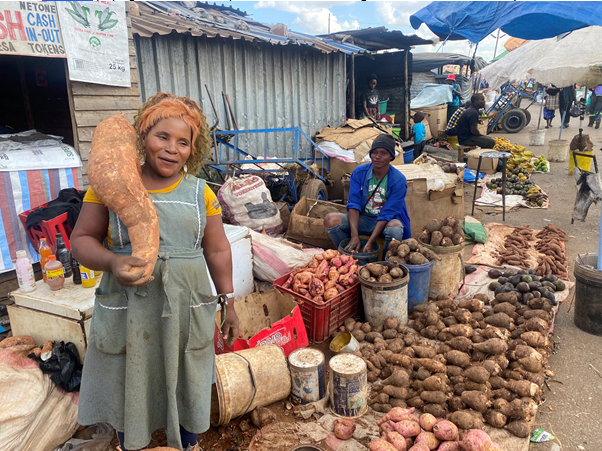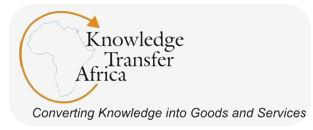Successful transition from primary production to industrialization requires serious attention to detail. Otherwise, it will be difficult for African countries to shift from subsistence farming, informal employment, and primary commodity production toward manufacturing and services. The way African mass markets deal with capabilities and expertise can provide useful lessons to policy makers on the value of paying attention to important details of an agriculture-driven economy.

Capabilities that drive collective action and impact in mass markets
Some of the undocumented operations that keep the mass markets going for years relate to how commodities are delivered in the market for trading. The size of trucks is determined by commodities to be transported from diverse farming areas to markets as well as distance to markets. When the distance is long, 30-ton trucks may be appropriate for transporting bulky commodities like potatoes and fruits. Transporters build their relationships with farmers through runners who find business for them. In some cases, traders use public transport to go and find commodities in farming areas. When the consignment is ready, they call the transporter.
How packaging influences marketing and transportation dynamics
Besides influencing prices in small cities, big territorial markets in capital cities tend to be major sources of packaging materials that go to other cities, towns and rural business centers. Mbare market in Harare handles more than 50% of the 50kg bags circulating the country. That includes both new and second-hand or third-hand bags. Every mass market has traders who specialize on packaging and even importing some packaging materials such as sacks, plastic bags and plastic crates. Most of the packaging materials used in the mass market are often re-purposed from the formal sector. The type of pockets used for packing potatoes are also used for packing butternuts, garlic and onion, among other commodities. Onions are packaged and conveniently transported in 10kg pockets which also becomes the standard measurement for selling the commodity.
Bulky commodities like avocadoes and banana from distant areas can come to the market in 90kg bags from which the commodities are broken down to different sizes according to the demands of diverse consumers some of which prefer 20kg buckets. The 62kg bag (semia/saseka) that is used to transport cucumbers, butternuts and other commodities came into the market because vendors who sell these commodities in residential areas through small heaps discovered that a 50kg contained less commodities when breaking bulk into heaps, singles and other ways through which commodities are demanded by different classes of consumers in residential areas. Transporters have also influenced the use of the semia/saseka. Transporters charge transport costs per bag not per load. So, farmers and traders found it better to use a bag that carries more commodities for the same transport fees than using a 50kg which carries less commodities and therefore expensive to transport.
What drives units of measurement in mass markets?
Units of measurement are mostly driven by how the farmer or trader is going to sell to diverse consumers. Dozens are the only units for green mealies. Bundles are ideal for leafy vegetables also influence buying at residential vending sites. Traders who hoard leafy vegetables from farmers have insisted that a bundle of Covo or Rape leafy vegetables should contain 200 – 220 leaves which are broken down to 16 leaves at street vending sites. This is different from formal markets like supermarkets that want bundles at 8.50grams to 1kg. Units of measurement for commodities like sweet potatoes are broken bulk from 90kg bags to 5-litre tins, driven by the nature of direct selling to vendors and walk-in consumers who determine the way bulk should be broken in line with their buying power. Some vendors do semi-wholesaling, for instance, by hoarding sweet potatoes from the main territorial market and selling in small heaps in residential market stalls. Consumers have also become comfortable and affordable to buy in 5l tins.
A major reason why a weighing is not used is because some commodities cannot be satisfactorily sold through weighing but through quantity like sweet potatoes. Potatoes are also sold in 5l tins to ensure affordability by many consumers. The increase in heaping speaks to affordable measurements by consumers most of whom cannot afford large volumes but have to live from hand to mouth. According to some traders who sell from residential stalls, breaking a 15kg pocket of potatoes into eight to nine heaps earns the trader USD12 more than selling a single 15kg pocket.
Behind each measurement are units of measurement. To address the inconvenience of having to weigh commodities each time someone wants to buy, market actors have simply agreed that as long as a 62 kg saseka is full everyone is satisfied. There is no need to spend time weighing commodities all the time. If that was to happen, there would be long queues as buyers waited to have their consignments weighed. The market has merely converged around some consistency guaranteed through common measurements. As long as market actors know the measurements there is agreement.
Commodities that cannot be counted
Twenty-liter tins or buckets are used for trading commodities that cannot be counted like small grains, wheat, groundnuts, Bambara nuts and maize grain. From a 20-liter tin the next level is a 5- liter tin. However, the 20-liter tin is highly controversial because it is not the same everywhere and, when weighed, commodities in a 20-liter come down to 18kg. The 20l tin is not ideal for trading commodities like Kapenta fish (Matemba) that do not have enough weight to fill up gaps. Matemba are better sold through kilograms as using 20-liter tins causes Matemba to be over-priced.
An indigenous chicken cannot be sold using a scale because it doesn’t weigh much. Market actors have to consider other benefits beyond consumption. For instance, mothering ability and capacity to produce many eggs or resistance to pests and diseases. Bundles and dozens are used in selling sugar cane but also inform selling of sweet reads. Transporters influence the number of bundles that can be loaded on a truck and loading r off-loading has its own separate fee from transporting.
The power of coordinated research
African governments have to invest in research so that they understand key details of how food commodities produced by smallholder farmers and traded by traders in territorial markets are traded. Research can also enable matching commodities to changing consumer tastes and preferences. Instead of spending a lot of money importing commodities, finished products, knowledge, seed and other inputs, investing in local research will enable African countries to save money and generate home-grown solutions. Why should African countries like Zimbabwe that have more than 20 universities continue importing knowledge and other inputs? More important than new market infrastructure is the introduction of new ways of doing business which can facilitate formalization through increasing interactions between market actors. Formalization is not just about formal registration but smooth systems of sharing knowledge that can lead to self-formalization.
Charles@knowledgetransafrica.com / charles@emkambo.co.zw /
Website: www.emkambo.co.zw / www.knowledgetransafrica.com
Mobile: 0772 137 717/ 0774 430 309/0712737430
